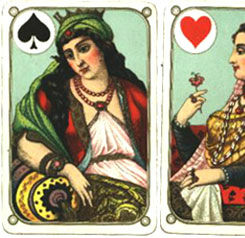Early German Engraved Playing-cards
During the second half of the fifteenth century, with printing technology commercially established and playing cards already a mass-produced commodity, a succession of masterly German engravers practised their art and decorative playing cards reached a zenith.
Spanish suited playing cards made in Germany
During the second half of the fifteenth century a succession of masterly German engravers practised their art and decorative playing cards reached a zenith. The South German Engraver was one such craftsman who produced an elaborate, Gothic Spanish-suited pack of playing cards. Slightly before this the Master of the Banderoles also produced engraved Italian or Spanish-suited playing cards of which only eight cards survive. Conforming to an archaic format of 52 cards with banner 10s, female 'Sotas', horsemen and kings, these packs are of interest on account of a number of other packs with similar stylistic characteristics surviving elsewhere, suggesting an archaic prototype for the Spanish-suited pack used between c.1450-1520.
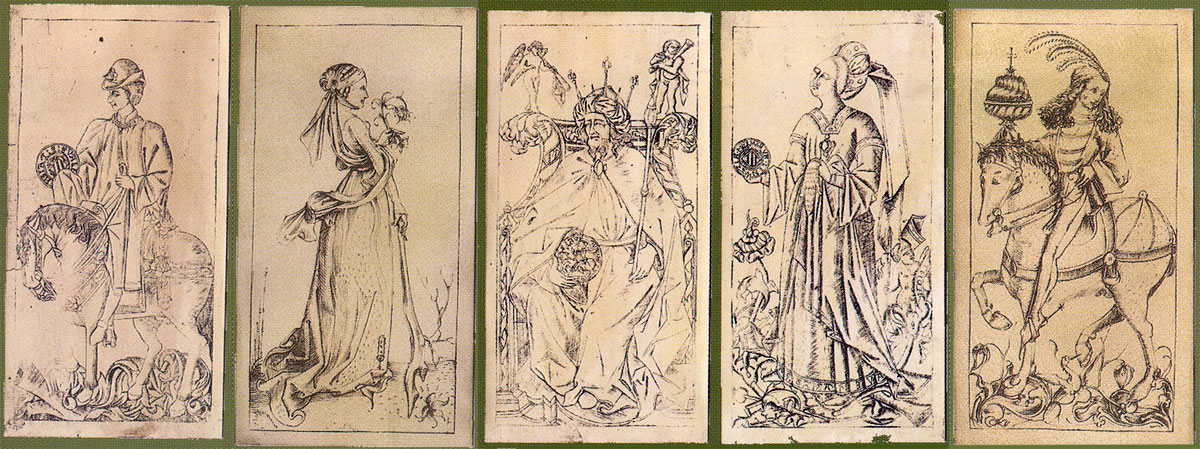
Above: five engraved cards from a pack with Spanish suit symbols made in South Germany around 1480. The inscription 'Valenzia' is visible on some cards and also the coat-of-arms of the kingdom of Aragon, for where the pack was presumably destined. The technique of engraving on copper plates, used here, permits great detail in the finished result.
The example shown above is another anonymous pack sharing similar characteristics with other examples. See also: Master of the Banderoles • The South German Engraver • Gothic Spanish Playing Cards • Master PW Circular Playing Cards • The Master of the Playing Cards
By Simon Wintle
Spain • Member since February 01, 1996 • Contact
I am the founder of The World of Playing Cards (est. 1996), a website dedicated to the history, artistry and cultural significance of playing cards and tarot. Over the years I have researched various areas of the subject, acquired and traded collections and contributed as a committee member of the IPCS and graphics editor of The Playing-Card journal. Having lived in Chile, England, Wales, and now Spain, these experiences have shaped my work and passion for playing cards. Amongst my achievements is producing a limited-edition replica of a 17th-century English pack using woodblocks and stencils—a labour of love. Today, the World of Playing Cards is a global collaborative project, with my son Adam serving as the technical driving force behind its development. His innovative efforts have helped shape the site into the thriving hub it is today. You are warmly invited to become a contributor and share your enthusiasm.

Leave a Reply
Your Name
Just nowRelated Articles
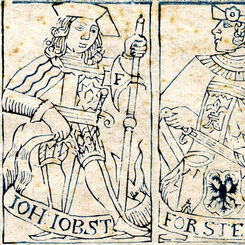
Uncut Sheet by Johann Jobst Forster
A proof sheet containing twelve court cards of conventional French type.
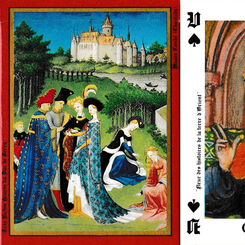
Jeu Gothique
‘Jeu Gothique’ illustrating the Gothic period in France, published by Editions Dusserre.
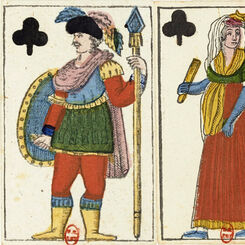
Fantasy deck by Joseph Fetscher
Fantasy French-suited pack produced by Joseph Fetscher, Munich, c.1825.
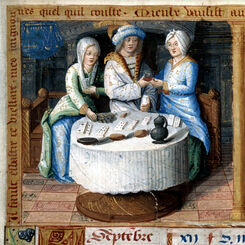
Gambling and Vice in the Middle Ages
Gambling and Vice in the Hours of Charles V: card-playing in the local tavern
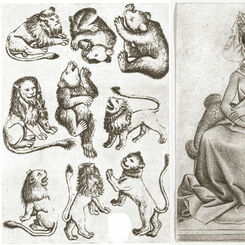
Master of the Playing Cards
Animal suited playing cards engraved by the Master of the Playing Cards, Germany, c.1455

La Baraja
Anonymous “La Baraja” Spanish deck, c.2005.
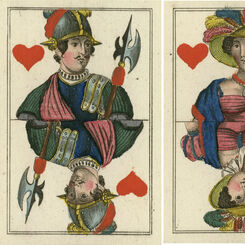
Unknown Maker
Early German deck by unknown maker, c.1825
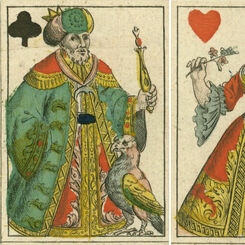
Joseph Losch
French-suited pack with full-length courts by Joseph Losch, c.1800.
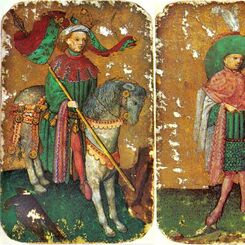
Stuttgart pack, c.1430
The luxury, hand-painted Stuttgart Cards (Stuttgarter Kartenspiel) dated c.1430, with suits of ducks...

Hans Sebald Beham
Playing cards designed by Hans Sebald Beham (1500–1550).
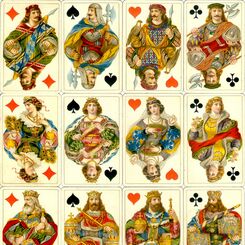
Mittelalter No.150
These designs imitating late medieval costumes were published by B. Dondorf in Germany in various ed...
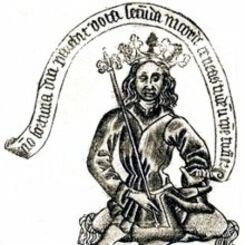
Master of the Banderoles
Playing Cards by the Master of the Banderoles, one of the earliest professional printmakers.
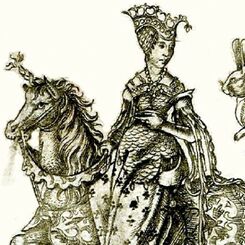
Master PW Circular Cards
Master PW Circular Playing Cards: roses, columbines, carnations, parrots and hares... everyday objec...

Johann Jobst Forster
Deck made by Johann Jobst Forster, Nürnberg, first half of 18th century in the Paris pattern.
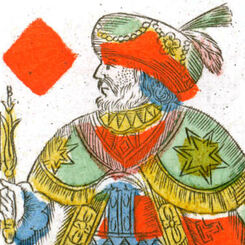
Johann Matheus Backofen
French-suited deck manufactured by Johann Matheus Backofen, Nürnberg c.1800.
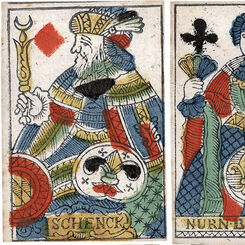
German playing cards
Card-playing rapidly became popular in medieval Bavaria and German printers were quick to supply the...
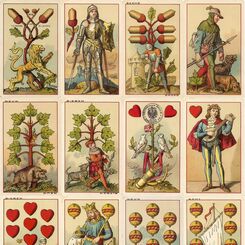
T O Weigel, Leipzig, 1885
Cards from a pack designed by Ludwig Burger, 1885

The Princely Hunting pack, c.1440
The Princely Hunting Pack, c.1440/45, is attributed to Konrad Witz and his workshop in Basle.
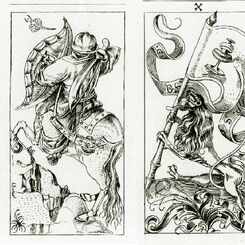
South German Engraver
A pack of 52 cards with banner 10s, female 'Sotas', horsemen and kings, the pack was engraved in the...
Most Popular
Our top articles from the past 60 days


 Your comment here. Your comment here. Your comment here. Your comment here. Your comment here. Your comment here. Your comment here. Your comment here. Your comment here. Your comment here. Your comment here. Your comment here. Your comment here. Your comment here. Your comment here. Your comment here. Your comment here. Your comment here. Your comment here. Your comment here. Your comment here. Your comment here. Your comment here. Your comment here. Your comment here. Your comment here. Your comment here. Your comment here. Your comment here. Your comment here. Your comment here. Your comment here.
Your comment here. Your comment here. Your comment here. Your comment here. Your comment here. Your comment here. Your comment here. Your comment here. Your comment here. Your comment here. Your comment here. Your comment here. Your comment here. Your comment here. Your comment here. Your comment here. Your comment here. Your comment here. Your comment here. Your comment here. Your comment here. Your comment here. Your comment here. Your comment here. Your comment here. Your comment here. Your comment here. Your comment here. Your comment here. Your comment here. Your comment here. Your comment here.
